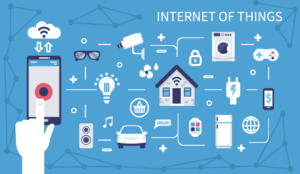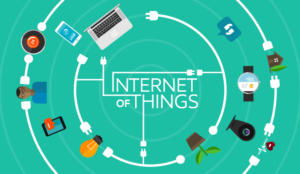Our panel of experts look at how the Internet of Things (IoT) will change the contact centre and enable proactive customer service.
The role of the contact centre agent will become more specialised
Many of the issues raised by IoT in the contact centre are likely to be technically specific. Today, agents typically deal with simple enquiries themselves and route more complex specific enquiries to the relevant subject-matter expert.
In the world of connected devices, where the focus will have shifted to proactive, outbound communications, the role of the contact centre agent is likely to transition from a generalist to a specialist in a specific product or problem type – fridge freezers that lose temperature control, for example.
There will be a business opportunity for extended services
The move to a more proactive approach will enable large enterprises to offer tiered levels of support – and will provide a great business opportunity to add value to standard service offerings.

Jeremy Payne
Companies will, for example, start delivering extended warranty packages or begin offering proactive round-the-clock monitoring of sensitive applications, bringing in agents in different geographies to manage and action escalations as required.
Businesses will be better prepared at the moment of engagement
Agents typically still spend most of their time reacting to customer queries or complaints. At the point of interaction, the customer will generally be more informed about the issue than the agent.
The data mine to which connected devices enable access will allow the business to be better prepared. At the point of engagement, they will not just be aware of the issue but will have remedies in place and may even have started applying them to resolve the problem.
With thanks to Jeremy Payne at Enghouse Interactive
Devices will automatically detect problems and notify the contact centre
The Internet of Things could have huge implications for the contact centre, enabling businesses to deliver pre-emptive service. For instance, if a patient’s heart monitor is over-heating, the device could send an automated service request to the right team.

Tim Pickard
On a more domestic level, washing machines may be able to self-diagnose problems and notify the manufacturer when a part needs replacing – taking the customer out of the equation altogether.
The implication is that attitudes will shift – instead of buying a product, consumers will be buying a product with built-in customer service, raising the stakes for getting service right.
Contact centres have already evolved to receive communications from a range of channels and the next addition could be an object-communication channel, which will still need to be integrated into a service.
With thanks to Tim Pickard at NewVoiceMedia
It will expand the ‘multichannel’ challenge we already deal with
Perhaps the most obvious impact the Internet of Things (IoT) will have on the contact centre and customer services in general is that it will expand the ‘multichannel’ challenge we already deal with.
Currently a consumer might make contact on their mobile phone, tablet, laptop or landline, they could call, use email, IM or even video call.
Look at the Amazon Mayday feature in the retailer’s Fire Phones, where you can simply hit a button to immediately go to a video call with a customer service representative. Then consider the complexities of that kind of implementation across another multitude of connected devices – customers hitting the ‘contact’ button on their fridge, toaster or car.
Masses of new data will help to improve the customer experience
This even broader multitude of devices per customer brings obvious challenges, but there are opportunities too. It means a whole new explosion of data that, if managed correctly, can be of enormous value to the contact centre and customer experience as a whole.

David Ford
To take an example in the automotive sector, cars are already being fitted with devices that can track how safely they’re driven, and that data can then be passed on to insurance companies. An insurance company’s contact centre agents will be able to see at a glance how safe a customer’s driving is, giving them better insight into what kind of quote to give them.
There will be new regulations to take into consideration
There will be new levels of complexity in the areas of privacy and data sharing. As multiple passive devices are tracking our usage and behaviour, how do we regulate who gets access to that data and how it’s shared?
It will take a while for regulations and best practice to be put in place, and inevitably there will be some scare stories along the way. But eventually there will be regulations, meaning we could end up having the same sort of compliance restrictions around the data from your customer coffee machine’s registration number (for example) that we do now around credit card numbers!
In the meantime, it’s incumbent on organisations to act responsibly with customer data, remain transparent about usage and always offer customers the options to opt out of sharing their information.
With thanks to David Ford at Magnetic North
Washing machines will perform self-diagnosis and alert an agent
The Internet of Things (IoT) will enable washing machines to perform self-diagnosis on any problems, such as major leaking, pump filter, blockages, or new parts needed.

Susannah Richardson
Through its in-built internet connection, it will automatically send a message directly to the manufacturer or supplier to alert them that they have identified a problem. The call centre agent will then be presented with all information on the problem and the customer can proactively make contact to organise the part to be fixed or replaced.
The Internet of Things will therefore help transition the contact centre from delivering a reactive customer service to a proactive approach by bringing together the human element and the internet element of customer service.
This is supported by Nicola Millard, Head of Futures and Insight at BT, who recently commented at our customer conference, “At the moment, the contact centre tends to be the victim of consumer demand, so it is responding to demand rather than controlling it. I think a lot of the technologies we are starting to see like Big Data and the Internet of Things, all of those potential streams of information could be used more proactively with the contact centre so it becomes more in charge of demand rather than just responding passively to it.”
New streams of information will help the contact centre take control
The Internet of Things will also transform contact centres by enabling them to gain more control of customer service by providing them with new streams of information that is integrated in to their existing infrastructure.
The impact this will have on the level of customer service delivered is huge. Customers will not have to wait in long queues, go through time-consuming security questions or try to explain complex faults to the agent.
From a business perspective, the level of customer service is greatly increased, agents are more knowledgeable and productive and the business should experience cost savings through a more streamlined, proactive way of working.
With thanks to Susannah Richardson at mplsystems
The self-service revolution will reduce call volumes but increase AHT
Connected devices will form a crucial part of the Internet of Things (IoT) for contact centres as more devices will be wirelessly connected to physical things, such as TVs, thermostats and cars.
Connected contact centre technology can report faults to the manufacturer or reseller before the operator is even aware of any issues. For contact centres, this potentially means a reduction in contact volumes.
This will have the effect of reducing costs but, as with other self-service channels such as websites and smartphone apps, calls and other contacts that do come through will inevitably be of a more complex nature. This will likely make First Contact Resolution more challenging, increase Average Handling Time and make call duration more volatile.
Wearable devices will interact with other contact centre technology
Wearable devices that uniquely identify agents and interact with other contact centre technology will be the next step from Bring Your Own Device (BYOD). Devices will receive notifications that save time, reduce human error and are a boon for schedule adherence and intra-day rescheduling. Wearables will be an important part of streamlining processes and improving customer experience.
Additionally, contact centre employees currently working in the call centre or working at home will have the freedom and flexibility to work anywhere.
With thanks Chris Dealy at injixo
Customer interactions will be underpinned by far deeper levels of context
The Internet of Things will start to generate data that can be correlated across a range of ‘domains’ – such as CRM or Service databases – ensuring that customer interactions start to be underpinned by far deeper levels of context.

Stuart Dorman
In practice, data will become a key contextual input for standard customer service interactions – signalling a changed device state to the customer service centre.
Service providers will need to blend IoT with traditional channels
Because it’s no longer the customer that’s initiating the contact, service providers will need to find ways to blend IoT automated responses with traditional assisted contact channels.
Those organisations that successfully integrate IoT-initiated proactive care into their customer journeys will quickly find themselves with a critical service differentiator.
With thanks to Stuart Dorman at Sabio
How do you think the Internet of Things (IoT) will change the contact centre?
Author: Megan Jones
Published On: 15th Jul 2015 - Last modified: 12th Nov 2024
Read more about - Technology, Chris Dealy, David Ford, Editor's Picks, Enghouse Interactive, IFS, Intrado, Jeremy Payne, Nicola Millard, Peopleware, Sabio, Susannah Richardson, Vonage




















